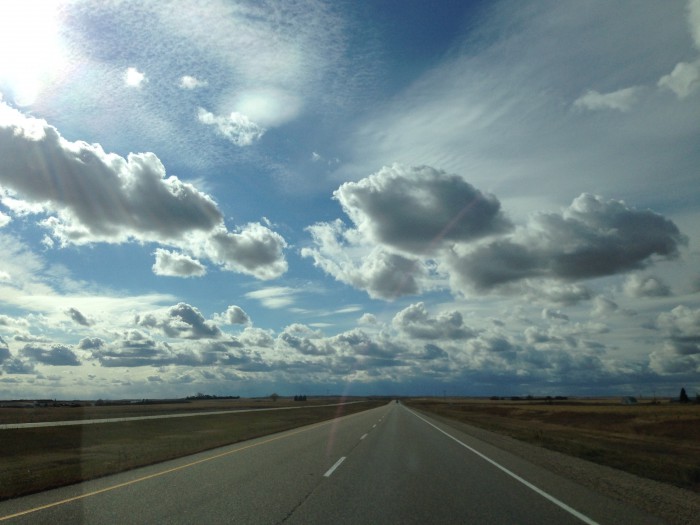Hi – me again! This time writing from the British Consulate-General in Vancouver. For those who keep up with our blog, I was previously working at the British High Commission in Ottawa as Science and Innovation Officer. With Nicole back in her seat as team lead in Ottawa, I moved out West to take up the role in Vancouver for a short term.
What blogger/scientist/science policy geek wouldn’t take the opportunity of a cross-Canada road trip to conduct an experiment? Of course I did. To illustrate the vastness that is Canada and document the changing landscape, I took a photo out of my surroundings every 2 hours and posted it on my Twitter feed (@AKweirich). Due to car problems in Northern Ontario, the experiment failed 🙁 But you can still check out my photos using #xCanadaRoadie.
Last day in Ottawa! I’m moving West and exploring Canada along the way. Follow along at #xcanadaroadie pic.twitter.com/f8aVb0hI1w
— Alexandra Weirich (@AKweirich) October 13, 2013
Now safely arrived in Vancouver where I cover science, research, and energy in B.C. and the Northern Territories, I’d like to reflect on some of the amazing science going on in the research-and-innovation rich country of Canada – and some GREAT UK-Canada science connections too!
Two hours North of Ottawa in a tiny town on the river is located the first civil nuclear energy research facility ever built outside of the USA. I visited the AECL Chalk River Laboratory earlier this summer with Dr. John Roberts of the Dalton Institute at the University of Manchester. Canada is a world leader in nuclear energy with Ontario sourcing most of its electricity from nuclear power. In order for the UK to meet its ambitious carbon emissions targets and cut greenhouse gas emissions, it must invest in civil nuclear energy. The UK has much to learn from Canadian expertise. Perhaps Dr Tim Stone, former expert can expand better than I…
The rocky landscape of Northern Ontario is extremely rich in minerals. These are thought to have been deposited by a large meteor that struck the area thousands of years ago leaving large deposits of Nickel and Zinc – hence the City of Sudbury’s Big Nickel monument. Mining has been the main industry in the area for generations deepening Canada’s research expertise and industrial know-how in the mining sector. But did you know that hidden deep down an old mining shaft in Sudbury is a unique world class physics lab? That’s right! SNOLAB is a cool example of Canada-UK research partnerships. UK, Canadian and international scientists run experiments 2 km below the Earth’s surface, in a ‘clean’ environment. They are trying to solve the puzzles of the universe…
You say Prairies and I say FARMS! Agriculture and food science is another area of research where Canada excels – the Canola crop from which Canola cooking oil is made, is a Canadian invention. But agri-tech isn’t the only promising field of research in the prairies. Saskatchewan is the site of one of the world’s first Carbon Capture and Storage demonstration sites. It puts into practice the idea that the carbon produced from coal-burning power plants can be captured before being released into the air and safely stored underground or used in other processes. This is a serious area of consideration for the UK. In fact, Sir Mark Walport, the Scientific Advisor to the UK Government, took a look at this technology during his fact-finding visit to Canada in October. And with CCS being the subject of at least 3 Canada-UK research MoUs, this is a promising area for Canada-UK science collaboration indeed…
No doubt that the Athabasca Oil Sands is the subject of much world-wide discussion, but let’s not let this overshadow the fact that Alberta is a hot bed for clean energy research. In fact, energy sustainability was the subject of our Science is GREAT event at the University of Calgary. I stopped in Calgary for this event and caught up with a Fellow of the Royal Society in the UK doing research on sustainability in the Oil and Gas industry in Alberta:
Now to explore science, research, and innovation in B.C. and Vancouver! Stay tuned for more Canada-UK science collaboration from the beautiful West Coast!

